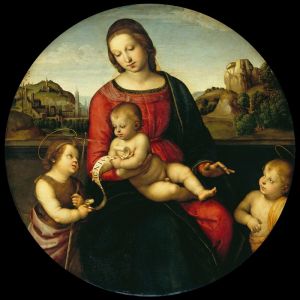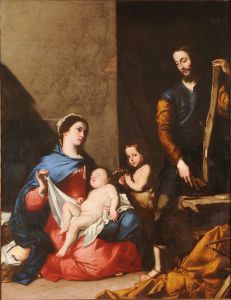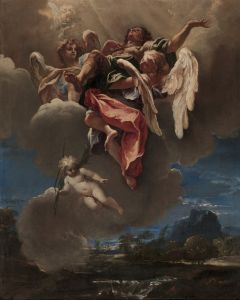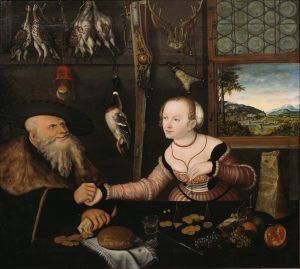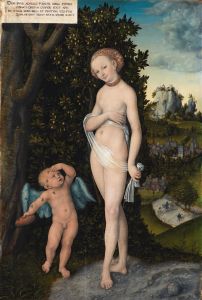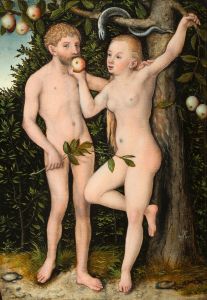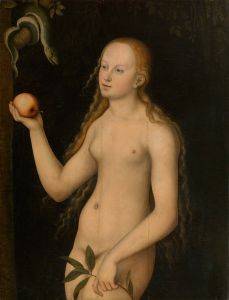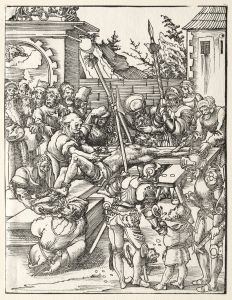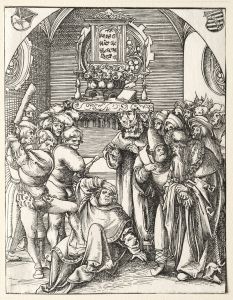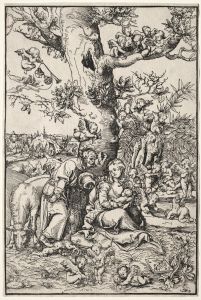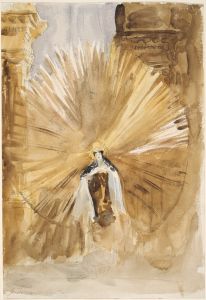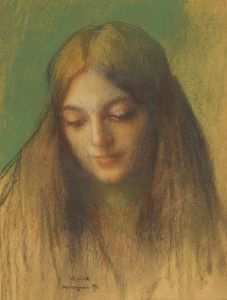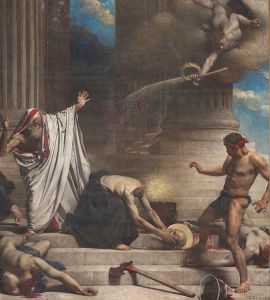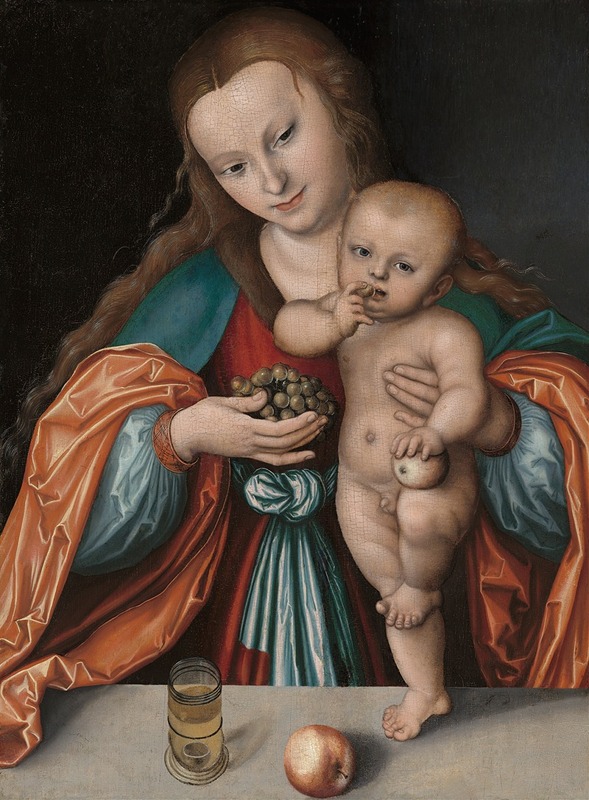
Madonna and Child
A hand-painted replica of Lucas Cranach the Elder’s masterpiece Madonna and Child, meticulously crafted by professional artists to capture the true essence of the original. Each piece is created with museum-quality canvas and rare mineral pigments, carefully painted by experienced artists with delicate brushstrokes and rich, layered colors to perfectly recreate the texture of the original artwork. Unlike machine-printed reproductions, this hand-painted version brings the painting to life, infused with the artist’s emotions and skill in every stroke. Whether for personal collection or home decoration, it instantly elevates the artistic atmosphere of any space.
Lucas Cranach the Elder, a prominent German Renaissance painter, created several works titled "Madonna and Child," reflecting his deep engagement with religious themes and his ability to convey them through art. Cranach was born in 1472 in Kronach, Germany, and became a leading figure in the Northern Renaissance. He was known for his portraits, religious subjects, and mythological scenes, often characterized by their vivid colors and detailed representation.
The "Madonna and Child" paintings by Cranach are notable for their serene and tender depiction of the Virgin Mary and the infant Jesus. These works are part of a long tradition of Christian art that focuses on the maternal bond between Mary and Jesus, a theme that has been explored by countless artists throughout history. Cranach's interpretation of this subject is distinguished by his unique style, which combines elements of Gothic art with the emerging Renaissance ideals.
Cranach's "Madonna and Child" paintings typically feature the Virgin Mary holding the Christ Child, often set against a simple background that emphasizes the figures. The compositions are marked by their elegance and grace, with Mary often depicted wearing richly colored garments and a gentle expression. The infant Jesus is usually shown with a playful or serene demeanor, engaging with his mother or holding symbolic objects such as a fruit, which can represent the fall of man and redemption.
One of the distinguishing features of Cranach's work is his use of color and detail. His paintings often include intricate patterns and textures, particularly in the depiction of fabrics and backgrounds. This attention to detail not only enhances the visual appeal of the paintings but also reflects the artist's technical skill and his ability to convey complex themes through visual means.
Cranach's "Madonna and Child" paintings were created during a time of significant religious change in Europe, coinciding with the Protestant Reformation. Cranach himself was a close friend of Martin Luther and played a role in the Reformation by producing portraits of Luther and other reformers. Despite the religious upheaval of the time, Cranach continued to produce Catholic-themed works, including the "Madonna and Child," which suggests a nuanced approach to the religious tensions of his era.
Several versions of "Madonna and Child" by Cranach exist, each with slight variations in composition and detail. These works can be found in various museums and collections around the world, showcasing Cranach's enduring influence and the timeless appeal of his religious imagery. The paintings are appreciated not only for their artistic merit but also for their ability to convey the spiritual and emotional depth of the subjects.
In summary, Lucas Cranach the Elder's "Madonna and Child" paintings are a testament to his skill as an artist and his ability to interpret religious themes with sensitivity and grace. Through his use of color, composition, and detail, Cranach created works that continue to resonate with viewers, offering a glimpse into the devotional practices and artistic achievements of the Northern Renaissance.





